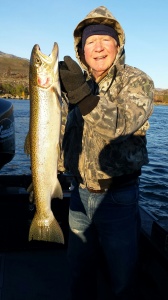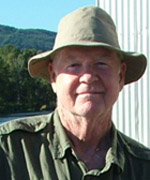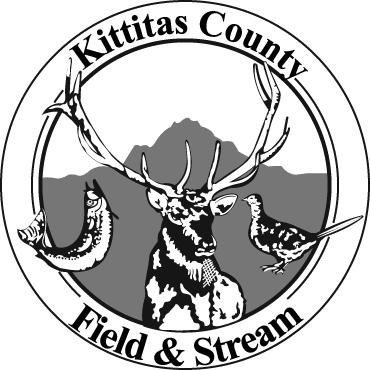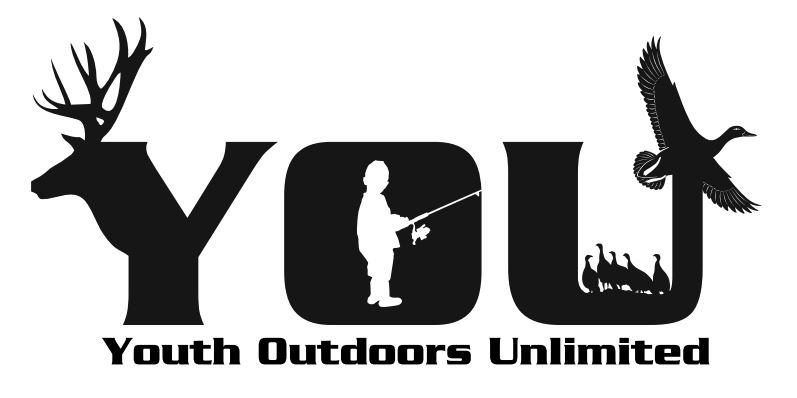Archive for November, 2014
All About Black Friday and Shopping Locally
It’s that time again. In keeping with Reecer Creek Rod, Gun, Working Dog & Outdoor Think Tank Benevolent Association bylaws, and my role as chair of the Help Outdoor Homeys Manage Black Friday Subcommittee, please find herewith the early hot gifts for your 2014 outdoor nut.
National retailers are hustling your business with tantalizing “hot” lists. I can assure you that the retailers of Paradise are basing their hot lists on local demand. Check local folks first.
Not sure what to get your outdoor nut? Take a couple minutes and write out your best guess at what makes your outdoor nut kid, spouse or friend so passionate about being out there. Then consider how you might support that healthful habit – education, tools, toys, clothing, fuel or whatever – and give a gift that will mean something special each time they head out.
Let’s start with an immediate gift you may already have in mind. The fun starts in days; the Valley Rifle and Pistol Club’s Light Rifle Class League. The 16 week program of safe family recreational shooting will cost 55 bucks for your household. Bring your little rifle and ammo, and the regulation 10-bull NRA targets, modern heated range facility, the direction of a qualified rangemaster and coaching will be there waiting for you. There is no better gift for your children and grandchildren than learning the responsibility and discipline of safe shooting and firearm handling while enjoying the simple pleasure of putting holes in paper exactly where you want them. Mel Goudge at 509-925-4285 or Hal Mason at 509-962-3002 will get your household on the list. It starts mext Thursday evening.
At the east end of the valley, Sure Shot Guns & Pawn, in Kittitas, carries a wide variety of firearms, with accessories for each of them. The perfect-sized Smith & Wesson Shield in .380 or 9mm is popular this fall, as is the Walther pk380 – in black, pink, purple or camo. The redneck in your life will deeply appreciate the Buck Wear T-shirts and caps and the exploding tannerite targets. Stocking stuffers include calls for anything you want to attract, pocket knives, ammo, and Sitka Camo. Check on anything else you need at www.sureshotguns.com or 509-968-4867.
In Cle Elum, John’s Three Forks Ammo & Reloading is offering a large variety of everything for the holidays. Special pricing now on .45 acp, 9mm and AR .223 ammo, t-shirts and many other holiday goodies. No one in the region carries more or better reloading equipment than Three Forks, including the top of the line forester and Dillon brand equipment and tools. They stock more bullets and live ammo in more calibers and variety than ever. No surprise to anyone is the growing popularity of exploding targets, and John carries awide variety of them. See it all at www.threeforksreloading.com or call 509-674-2295. If they don’t have it, they’ll find it.
In the middle of it all is Bi-Mart. My spies there tell me that the Ruger 10-22 and extended magazines for it are hot sellers, with the Daisy Red Ryder BB gun and the BB rifles like Crossman’s Pumpmaster. Shotgun shells (especially steel shot) and waterfowl decoys are giftable, as well as airsoft guns, insulated camo clothing, decorative wooden ammo boxes and knives and knife gift sets. Whitefishing gear, pocket knives and handy keychain lights are perfect for stockings. 509-925-6971 will get you to one of the Bi-Mart sporting goods pros.
Nika Mihailov and his Kittitas County Trading Company crew on Main Street are always at the center of interest in new and used handguns. Of special interest this year is the Kel-Tec KSG 12-guage shotgun. This is a compact gun with two magazines – two high capacity tubes. The AK 47 and AR 15 type rifles and accessories, all the way back down the spectrum to the M-1 Garands are still hot gifts, along with a wide variety of ammo and exploding Tannerite targets. There is always a variety of high quality new and used knives, and Nika is still paying big cash for gold and silver (check your old or broken jewelry). Start your shopping with a pocketful of unexpected cash. If you need something in particular, or have a question, call the crew at 509-925-1109.
Brothers n Arms (www.eburgguns.com and 509-933-4867) is located on the Vantage Highway and carries a full line of firearms, with several hard to find items. Unique to these guys is their ability to build almost any “special needs” firearm – indeed, these folks custom-built the firearms that made it possible for some seriously disabled youngsters to participate in hunts as part of the Youth Outdoors Unlimited program. They also have a comprehensive regular schedule of firearms handling, safety and shooting classes – including free basic hunter education classes for kids and the free McGruff Kids Safety Class.
If one or another of the women in your family is receiving a handgun, complete the gift with a safe shooting and handling class just for her. Contact Marilyn Mason at 509-962-3002.
I must recommend a copy of the updated third printing of Jim Huckabay’s heartwarming “WILD WINDS and Other Tales of Growing Up in the Outdoor West.” Pick it up at Jerrol’s.
Shop in Paradise. You’ll find virtually everything your bright sun-loving, fresh air-loving outdoor nut needs close at hand – even on the blackest of days.
Happy gifting…
The Late Fall Deer Hunt
I took a run up to Colville last week. Sort of a last hurrah for 2014 deer hunting – a couple more days to find that big whitetail buck hanging out in the thickets atop one of the timbered hills perched above Williams Lake Road. Over the last decade or so, this run seems like one of those things that just has to be done.
Washington’s general state-wide buck deer season kicked off about a month and a half ago, and lasted through a couple weekends. This November season is specific to whitetail deer bucks in the northeast corner of the state. There is also a late season for black-tailed deer on the other side of the Cascades, but my habit is whitetails. Thus, I crawl those Colville hills.
I met the folks who own the up-and-down half section some years ago. Since their first invitation to hunt it, I have been a regular. I’ve always had a couple or three days to myself. For a couple years while he was studying at Central, Edward (last of the Hucklings) joined me. To my mind, those were my richest moments on the mountain. Still, even on my own I have never regretted an instant of time on those Colville hunts.
From year to year, I’ve been rained on, snowed on, blown on and nearly frozen. I have always seen deer, including a handful of legal bucks I left to roam the mountain.
One year, the buck I was looking for found me. 2006 was the first year Edward hunted with me in that corner of the state. We would have two wet and drizzly days to ourselves on that beautiful piece of private ground – ground that was sometimes crawling with whitetail deer.
Given the demands of homework and grading, we final piled into my rig at 2 a.m. on a Saturday and headed northeast. By daybreak, we were in the soggy woods. By noon, we had spotted several deer, a couple of them possible bucks.
We hunted hard and widely, and that afternoon chose a couple stands overlooking prime bits of habitat on the hills several hundred feet above the valley bottom. Edward watched deer drifting across a hillside, but no clear antlers. In the semi-sunshine, some does moved below me. At 3:30, a whitetail buck materialized in a spot I’d been watching for a couple hours. One short prayer later, I was dressing a very nice fat buck.
The next morning, Edward found the rest of the deer on the mountain, but was unable to find one willing to give itself. About noon, we headed for home.
A year later, we started our hunt on a Saturday dawning with 50-foot fog and a light drizzle. As we moved up to the spots we wanted to watch, we slipped by a couple does and small bucks. At the fork where Edward would climb up to his spot and I would continue on to mine, we heard a cough in the fog. The kid signaled he could hear steps coming. We waited. In moments, a grey ghost materialized from the fog. The doe couldn’t see us any better than we could see her, so we stood looking at each other a short stone’s toss apart. As some point, she backed up enough to disappear – then returned to view. Somewhere in there, she sort of shrugged and headed off down a hill.
By Saturday afternoon, the fog had lifted to 70 or 75 yards, with a moderate, steady rain. By dark, we had seen a handful of does, but none of the bucks we expected to see chasing them at this point in the rut.
By daylight the next morning, we were up on a high bench, finding none of the bucks we have come to expect there. We watched does feeding and moving, and worked our way to the most remote corner of the mountain top ground we had permission to hunt. As we slipped along the timber’s edge, Edward nodded and grabbed his binocs. From 300 yards, we watched a nice buck behaving rudely – very closely following an attractive doe wandering and darting in and out of the brush and timber. By the time we finished our stalk, they had dropped off into a deep draw on closed ground. We slipped through more of the buck country, to no avail. At some appropriate point, we declared that hunting season a success and pointed the rig back to Paradise.
In the years since, I have never failed to see deer – except one to take home, I got close in ten inches of snow a couple years ago, but not close enough. As I watched that buck slip away, I chuckled at Edward’s story of watching over that same bench and looking directly behind him in time to see a big buck grow weary of waiting for him.
This year, the bitter cold air sliding down from the north had me in deep debate about making the trek. The more I thought about those steep hills and open benches and the peace with which they leave me, the faster I loaded my rig for the trip.
I saw deer and I stalked deer. Dressed for the bitter cold, with handwarmers for my fingers, I was never particularly uncomfortable. Over a couple days, I climbed and watched and breathed crisp clear air. “This is for you, Edward, and for your grandfather – The Old Man – who insisted that everyone should have time on a mountainside looking for deer,” I thought. Mostly, though, I got that it was for me. I never saw a buck.
These late deer hunts leave me grateful for the natural world and time immersed in it. I hope that you, too, find much for which to be thankful this holiday season.
Comments Off on The Late Fall Deer Hunt
Chasing Steelies
 You are no doubt aware that Homey Kirk Johnson and I, along with various and sundry close family, have a thing for the steelhead of fall.
You are no doubt aware that Homey Kirk Johnson and I, along with various and sundry close family, have a thing for the steelhead of fall.
Thus it was that Homey, my boyfriend-in-law Brian Smith and I found ourselves driving into Pateros at 6:30 a.m. a week ago. We were meeting up with Shane Magnuson for our annual steelhead adventure on the Upper Columbia and one or two tributaries. We were a few minutes late as a result of a dark-thirty, citation-free, confab with a very nice state patrol officer outside Wenatchee who wanted to talk fishing. Be that as it may, we climbed aboard Shane’s sled and were soon chasing steelies on an absolutely perfect fall day.
In this fishery, we would only be able to keep hatchery steelhead – those with a missing adipose fin – and would release all wild fish. Over the previous week or two, something around 70% of the fish had been keepers.
Steelheading on these stretches of water is a cast-and-drift effort, with Shane getting us in position and us attempting to get a lure or bait within striking distance of a strong, red-streaked, bright-sided fish. Through hour after hour of cast, drift and cast again, we had just enough action to keep our blood pressure at a healthy level. After a couple hours and one keeper on the Columbia, however, Shane had had enough, and we packed up to hit the Okanogan.
That short transition drive gave us a chance to compare notes on 2014 and earlier years. We talked about the brilliant chrome steelhead which Bill Boyum and I brought home with us from the Lower Columbia a few months back, and other regional steelie action. And, since it is what fishers do when things get quiet, we talked about the fair number of nice fish we’d taken up here on other trips. Somewhere in there, we decided we needed to get back to the Quinault – I may have reminded my team of the 24 pound steelhead I took on that river half a decade ago – and I agreed to reach out to Chopper, my Quinault fish-whispering buddy of many years.
By mid-morning, we were wending our way up the almost-too-shallow Okanogan. There were fish everywhere, but strikes were few. After we had caught one very nice wild fish, and lost another to a submerged rock, Shane suggested we change our approach.
“We need to make the fish angry,” he said. “Jim, you are the decoy. You must find ways to insult these fish enough to get them to strike. Brian and Kirk will man the rods,” Thus it was that on a beautiful, quiet, peaceful, cool, sunny day – on a river as picturesque as you will find anywhere – I found myself insulting steelhead, with language strange to my tongue. Totally out of character, of course, for a man as sweet a I am, but I did my best. I insulted steelhead looks, parentage, behavior, mate choices and most anything else I could imagine. It worked.
Over the next couple hours, we caught six or eight untamed fish, missed that many strikes, and added a keeper to the boat. It was as good a day as any of us could recall.
As we pointed the rig toward home, Brian noted that a good number of people (including many fisheries biologists) do not have my understanding of how our steelies evolved. He pointed out my obligation to pass knowledge along. Fine. Here.
Quite simply, steelhead are sea-run rainbow trout. It’s not that simple, of course. They are anadromous – meaning that they are “bi,” enjoying the pleasures of both fresh AND salt water. It all started when a rainbow got large enough to develop a taste for ferrous minerals. It headed for the ocean and places where the underlying rock (and the water itself) was rich in iron. The shrimp and salt-water prey of this first sea-run trout were also very high in dissolved iron. That iron, in turn, was absorbed in the bony parts of the sea-run rainbow. By the time that first sea-run rainbow returned to fresh water, its bones – and skull – were nearly entirely iron. As others joined that first pioneer, they became exceptionally heavy, strong, fighting fish. Much of their beauty is the result of that iron leaking out through their gills, staining their sides with an almost iridescent red color. The first European to catch one of these fish did so accidently when he dropped his magnetic watch fob into the Columbia, and immediately found himself chained to a twelve-pound trout. The fish is probably more appropriately named “ironhead,” but you know how biologists are. You will also note that, in the Washington State Fishing Rules booklet, the use of magnets in ironheading is not listed as a legal method of take.
Steelheading; one more way to make fall a special time.
Comments Off on Chasing Steelies
About Migrating Birds and People
I was on the horn, reaching out to one of my closest homeys, calling to invite him to come help me comb some hilly, brushy country up by Colville next week. For several years, I’ve been trying to catch up with one of the big whitetailed bucks that favors a secluded hollow along the top of a too-steep ridge. I figured that he could help. Not so, he figured, since he was in Arizona.
“What…? What’s in Arizona?” I asked. He laughed and said, “Arizona…”
Suddenly it dawned on me; this is migration time – for both our feathered and snowbird friends. I have long marveled at the mysterious forces that trigger migration for any of the critters scattered across the face of the globe. I asked Homey “What made you decide to go now?” He paused for a moment and said, “Mama said it was time to go.”
That snowbird migration mystery solved, I was now free to think about birds.
For a couple weeks now, we’ve all been watching the big mixed-species flocks of various birds undulating across the valley. The authors of “The Birder’s Handbook” (Ehrlich, Dobkin and Wheye) think these mixed flocks may have to do with increased feeding efficiency – more birds able to find more food. Some argue that it has more to do with mixing far-sighted birds with near-sighted birds for safety. Whatever brings them together, at one time or another you will see mixed flocks of starlings, red-winged blackbirds, horned larks, wrens, sparrows, nuthatches, pipits and others. In all likelihood, some of the species in the flock are readying for winter in Paradise, while others are preparing to head south. I’ve long considered the possibility that they are all just saying their good-byes.
Be that as it may, we still wonder about what triggers migration. How do they know when? And furthermore, along these great traveling distances between breeding and wintering grounds, how do they know where or how?
As far as knowing when to head south, most votes go to photoperiodism – the changing length of day and/or the amount of sunlight reaching some critical level.
To me, the most interesting part of the equation is the part where they birds find their way back and forth. It is in this area that experiments and careful observations have shed most light in the last decade or so. Clearly, we have vastly underestimated our feathered friends through history.
Birds apparently acquire their navigation information from five primary sources: (1) the stars; (2) the sun; (3) topographic features of the land over which they fly (including wind direction where it is influenced by land forms); (4) earth’s magnetic field; and (5) scent. Given today’s tools of science, ornithologists are breaking new ground and filling in missing pieces in all five of these sources. The clues are used in some hierarchical way, and in different orders by different species.
Captive indigo bunting youngsters learned a false night sky pattern as they grew. Once released to migrate, they reacted and oriented to a misplaced star pattern. Oscar Gordo’s work in climate research has tied migration timing and pattern changes to weather and climate shifts, with temperature emerging as the dominant factor.
With the ability to look at global energy patterns, Deppe, Wessels and Smith produced a very interesting space based study. The study was published in the Alaska Park Science Journal in 2006. Looking at bird migration on a global scale and comparing it to energy and food availability patterns, they developed a conceptual framework for examining individual energy budget and survival issues within migration paths worldwide.
In the May 13, 2010, issue of Nature, Ritz, Thalau, Phillips and the Wiltschkos reported on their discovery about birds’ eyes. It appears that a special light-absorbing molecule in the eyes of migrating species allows them to actually visualize the earth’s magnetic field, perceiving the magnetic field lines as a sort of road map. One researcher has suggested that birds may see those magnetic lines as patterns of color, or light, superimposed over surroundings as they fly.
The whole business is fascinating, of course, and there is vastly more to learn – at any level you like. Check out migration patterns and timetables at www.birdnature.com/migration.html. Find out all you ever wanted to know about bird tracking, specific North American pathways (and books on the subject) on the terrific web page at www.backyardnature.net.birdmgrt.htm. You will find very cool family games and interactive pieces at the Smithsonian’s Migratory Bird Center, with its cool games and interactive pieces, at nationalzoo.si.edu/scbi/migratorybirds/education/kids_stuff/woth_game/default.cfm.
No doubt, somewhere online, you will find information about “Snowbird” migrations, too. Maybe you can find out why on earth they would leave Paradise.
Comments Off on About Migrating Birds and People







